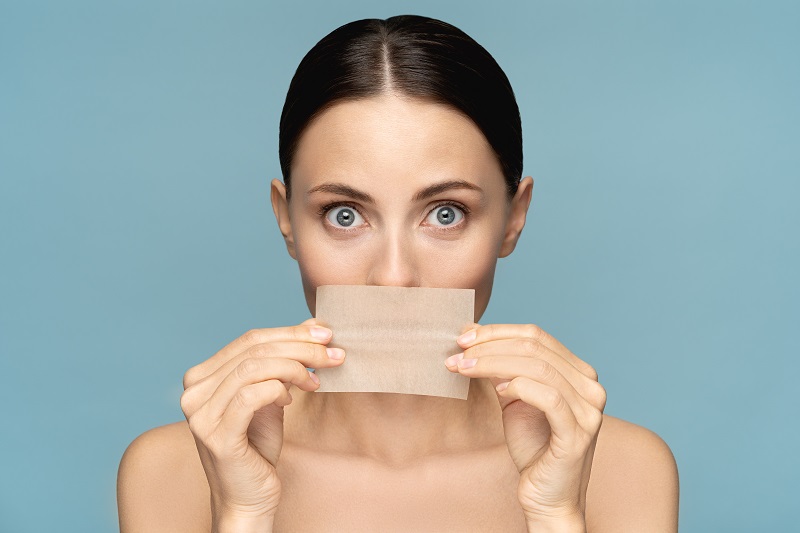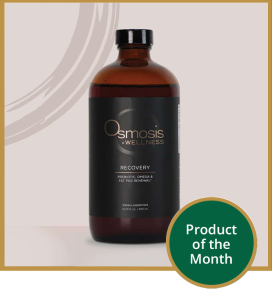Vibrant skin requires daily skin care, healthy lifestyle choices, and minimal exposure to environmental pollutants and UV rays. However, despite our best efforts our skin can still appear neglected. When the skin is too oily or too dry, the culprit is usually an imbalance in sebum production.
This article explains the role of sebum, which factors influence its production, and how to maintain optimal sebum levels for a healthy-looking skin complexion.

What Is Sebum?
Sebum is a light yellow, viscous substance on the skin’s surface. It is made of lipids or fat molecules that include natural oils, waxes, squalene, and cholesterol.
What Is the Role of Sebum?
The scientific community has limited understanding of the role of sebum and how different factors affect its secretion rate. They attribute the following functions to sebum:
- Skin lubrication and hydration. Sebum’s primary role is to keep the skin hydrated by preventing the evaporation of moisture and electrolytes.
- Photoprotection. Squalene in sebum displays natural protection against UV radiation.
- Protection against microbes. Sebum’s antimicrobial substances make it the first line of defense against bacterial, viral, and fungal infection.
- Antioxidant activity. Sebum helps transport antioxidants such as vitamin E from the blood to the skin’s surface, protecting the body from free radicals.
- Wound healing. Scientists believe sebum regulates pathogen activity and participates in wound healing.
Where Is Sebum Produced?
Sebaceous glands produce sebum. They secrete it in the follicle, which stimulates hair growth. As the hair grows to the skin’s surface, it pushes the sebum out.
Sebaceous glands cover almost the entire surface of our bodies and are typically grouped around hair follicles. The face, scalp, and chest contain the highest concentrations of sebaceous glands. The only areas without them are the palms of our hands and the soles of our feet.
What Causes Sebum Production?
Sebum secretion is a natural process that begins at birth. Several factors affect the rate of sebum production, making it unique for each person.
Age
Most people experience substantial sebum production in the first six months after birth. Sebaceous glands slow down their activity until puberty, after which it increases by up to 500%. Increased sebum production in this period is responsible for the appearance of acne because it mixes with dead cells and dirt in the pores, clogging them and causing breakouts.
For most people, sebum production slows down again after the age of 20.
Note: Learn more about what causes acne, and what are the different types of acne.
Sex
Some studies show that men experience significantly higher amounts of sebum as compared to women in the same age range.
Hormones
A spike in hormonal activity, which naturally occurs around puberty and adolescence, increases the secretion of sebum. The hormone most responsible for increased sebum production is testosterone. People who undergo testosterone replacement therapy may experience increased sebum levels.
As the sex hormones activity slows down with age, the sebum production decreases, often causing dry and itching skin.
Genetics
The size of sebaceous glands and how hormones regulate their activity is largely affected by genetics. People whose relatives have skin issues related to low or high sebum production have higher chances of experiencing the same concerns.
Medical Issues
Some health issues and medications may cause an imbalance in sebum production. They include:
- Pituitary and adrenal gland issues.
- Ovarian and testicular conditions.
- Parkinson’s disease.
- Malnutrition and restricted-calorie diets.
- Hormone medications, birth control pills, and prescription retinoids.
Lifestyle Factors
Saturated fats, sugars, milk, low water intake, alcohol, and nicotine may cause sebaceous glands to produce too much or too little sebum.
If you suspect your diet or lifestyle choices are negatively affecting your skin, take turns eliminating lifestyle factors on this list to discover what is disrupting your sebum levels.
Note: Learn how to do a full skin detox with lifestyle changes and over-the-counter products.
How to Balance Sebum Production?
An imbalance in sebum production usually causes skin issues. Excessive sebum production is responsible for oily, acne-prone skin, while reduced sebum production leads to dry, itching, and flaky skin.
There are several ways to resolve skin issues related to an imbalance in sebaceous glands’ activity and revert to an optimal sebum level.
Reduce Sebum Production
If you have oily skin and often experience breakouts, try reducing sebum production using these methods:
- Gently cleanse and exfoliate your skin every week using products for oily, acne-prone skin with alpha and beta-hydroxy acids.
- Use OTC products with salicylic or mandelic acid to minimize breakouts.
- Avoid foods that may cause oily skin, such as sugars and saturated fats.
Note: A common misconception is that people with oily and acne-prone skin should not use moisturizers. However, the opposite is often true. Dryness of the skin may cause sebaceous glands to go into overdrive, causing an overproduction of sebum. In that case, using a moisturizer may reduce sebum production.
If this sounds like an issue you might be having, check out our selection of the 5 best moisturizers for oily skin.
Boost Sebum Production
An underproduction of sebum often causes dehydrated, flaky skin and dry hair. To improve your skin and hair condition, follow these tips:
- Use gentle, alcohol-free skincare products designed for sensitive skin.
- Include moisturizers with humectants in your skincare routine.
- Wash your face, body, and hair with lukewarm instead of hot water.
- Drink at least eight cups of water every day.
When Should You See a Doctor?
If none of the above-mentioned practices produce the desired effect, visit your dermatologist.
Also, contact your doctor if you experience:
- Persistent breakouts.
- Painful cysts and nodes.
- Severe skin infections.
- Chapped, cracking, or bleeding skin.
Dermatologists treat skin issues related to an imbalance in sebum production with prescription medications, isotretinoin, corticosteroids, hormone therapy, and cosmetic treatments such as laser and chemical peels.
Note: Read our article chemical peel vs. laser to learn how they differ.
Conclusion
Our bodies produce sebum to keep the skin hydrated and protected from external factors. An imbalance in sebum levels weakens our skin barrier function and exposes our skin to environmental damage and dehydration.
Learn to recognize the symptoms of disrupted sebum production and restore optimal sebum levels to maintain healthy skin.
If you're struggling to recognize what your skin needs and need extra help, Vibrant Skin Bar's skin experts are ready to help via skincare tips and product and treatment recommendations. Contact us today for more information or to book a skin consultation.
For more tips on how to keep the skin healthy, read our Ultimate Guide on Skin Care.




